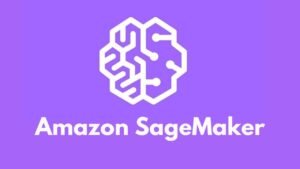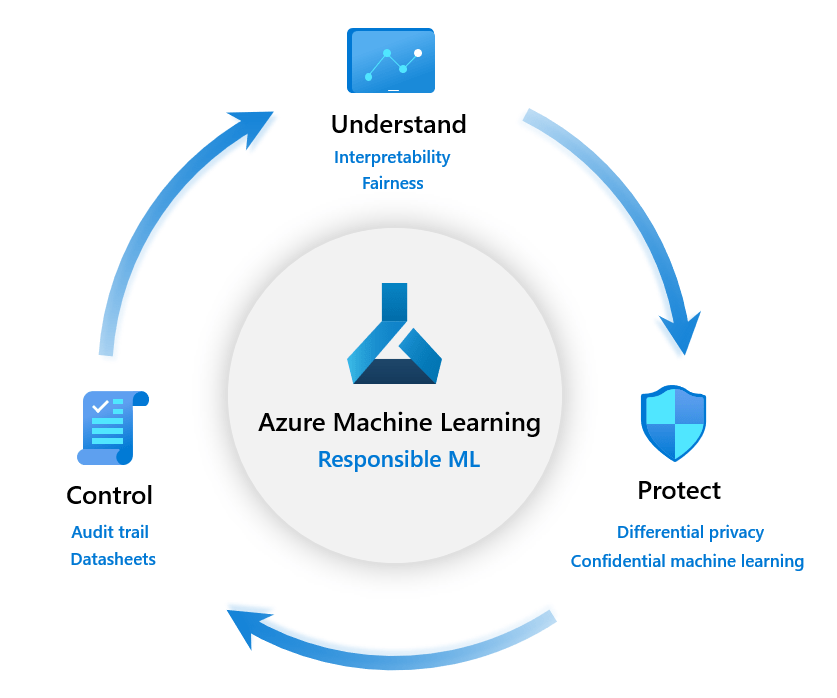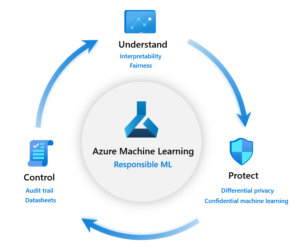
In today’s data-driven world, the ability to efficiently build, train, and deploy machine learning models is crucial for businesses and researchers alike. Machine learning platforms play a pivotal role in this ecosystem, offering comprehensive tools and services that streamline the development process and enhance productivity. These platforms provide a robust infrastructure that supports various stages of the machine learning lifecycle, from data preparation and model training to deployment and monitoring.
Among the myriad of options available, three platforms stand out due to their extensive features and capabilities: AWS SageMaker, Microsoft Azure Machine Learning, and Google AI Platform. Each of these platforms offers unique strengths that cater to different user needs and preferences. AWS SageMaker, for instance, is renowned for its scalability and integration with other AWS services, making it a preferred choice for enterprises with existing AWS infrastructure. Microsoft Azure Machine Learning, on the other hand, emphasizes ease of use and flexibility, providing a seamless experience for developers familiar with the Azure ecosystem. Lastly, Google AI Platform is celebrated for its advanced machine learning capabilities and integration with Google Cloud services, appealing to users who prioritize cutting-edge technology and innovation.
These platforms not only simplify the complex process of machine learning but also democratize access to powerful computational resources. By leveraging cloud-based solutions, developers and data scientists can perform large-scale computations without the need for significant upfront investments in hardware. This accessibility accelerates the pace of innovation, enabling smaller organizations and individual researchers to compete on a level playing field with larger enterprises.

In summary, AWS SageMaker, Microsoft Azure Machine Learning, and Google AI Platform are essential tools in the modern machine learning landscape. By offering a range of features tailored to different needs, these platforms empower users to harness the full potential of machine learning technology, driving progress and innovation across various industries.
- Overview of AWS SageMaker
- Overview of Microsoft Azure Machine Learning
- Overview of Google AI Platform
- Comparative Analysis: Key Features
- Ease of Use
- Scalability
- Support for Various Machine Learning Frameworks
- Integration Capabilities
- Pricing Models and Cost Efficiency
- Use Cases and Success Stories
- AWS SageMaker
- Microsoft Azure Machine Learning
- Google AI Platform
- Conclusion and Recommendations
Overview of AWS SageMaker
AWS SageMaker is a fully managed service designed to simplify the process of building, training, and deploying machine learning models. This platform provides a comprehensive suite of tools that cater to the needs of both beginners and advanced users, thereby accelerating the machine learning lifecycle. One of the standout features of AWS SageMaker is its scalability, which allows users to manage machine learning models of varying sizes and complexities effortlessly.
The integration of Jupyter notebooks within AWS SageMaker offers an interactive computing environment. This is particularly advantageous for data scientists and developers, as it enables them to write and execute code, visualize data, and perform complex computations all within a single interface. The platform’s support for an extensive range of machine learning frameworks and algorithms, including TensorFlow, PyTorch, and Apache MXNet, ensures that users have the flexibility to choose the tools that best fit their specific project requirements.
AWS SageMaker’s ease of use is another significant advantage. Beginners can leverage SageMaker’s built-in algorithms and pre-configured environments to quickly get started with machine learning projects, while advanced users can benefit from the platform’s robust customization options. The service’s automated model tuning, known as hyperparameter optimization, helps in achieving the best-performing models by automatically searching for the optimal parameters.
Moreover, AWS SageMaker facilitates seamless deployment of machine learning models. Once a model is trained, it can be deployed to a fully managed environment, allowing for real-time predictions with low latency. This capability is crucial for applications that require immediate inference results. In addition, the platform’s monitoring and logging features provide insights into model performance, ensuring that models continue to operate efficiently and accurately over time.



In summary, AWS SageMaker stands out as a powerful and versatile tool for machine learning practitioners. Its comprehensive feature set, combined with ease of use and scalability, makes it an attractive option for organizations looking to harness the power of machine learning.
Overview of Microsoft Azure Machine Learning

Microsoft Azure Machine Learning provides a comprehensive, cloud-based environment designed to manage the entire machine learning lifecycle. From data preparation to model deployment, Azure Machine Learning offers robust capabilities that streamline and enhance the workflow for data scientists and developers. One of its standout features is automated machine learning, which simplifies the process of selecting algorithms and tuning hyperparameters. This feature is particularly beneficial for accelerating model development and ensuring optimal performance.
In addition to automated machine learning, Azure Machine Learning excels in model interpretability. The platform offers tools such as SHAP and LIME, which help users understand how models make decisions, thereby enhancing transparency and trust in machine learning solutions. This is crucial for industries where model accountability is paramount, such as finance and healthcare.
Integration with other Azure services is another key advantage of Microsoft Azure Machine Learning. Users can easily leverage Azure’s data storage, compute resources, and analytics services to build and deploy machine learning models. For instance, Azure Data Lake and Azure SQL Database can be seamlessly integrated for data ingestion and storage, while Azure Kubernetes Service (AKS) facilitates scalable model deployment.

Collaboration is a significant aspect of Azure Machine Learning. The platform supports version control, experiment tracking, and shared workspaces, enabling teams to collaborate effectively on machine learning projects. This is complemented by its support for open-source tools and frameworks, such as TensorFlow, PyTorch, and scikit-learn. As a result, users can integrate their existing workflows and take advantage of a wide range of libraries and tools available in the open-source community.
Overall, Microsoft Azure Machine Learning stands out as a versatile and powerful platform for managing the end-to-end machine learning lifecycle. Its capabilities in automated machine learning, model interpretability, and seamless integration with other Azure services make it a compelling choice for organizations looking to harness the power of machine learning in the cloud.
Overview of Google AI Platform

Google AI Platform offers a comprehensive suite of machine learning products designed to streamline the development, training, and deployment of machine learning models. Leveraging Google’s robust infrastructure, the platform provides an integrated environment that simplifies every stage of the machine learning workflow.
One of the standout features of Google AI Platform is its support for TensorFlow, an open-source machine learning framework that is widely adopted within the industry. In addition to TensorFlow, the platform is compatible with other popular frameworks such as PyTorch, Keras, and Scikit-Learn, making it flexible for a variety of machine learning projects. This versatility allows developers to choose the best tools for their specific needs, ensuring optimal performance and efficiency.
Training models on Google AI Platform is facilitated by its powerful compute resources, including GPUs and TPUs, which significantly accelerate the training process. The platform also offers automated machine learning (AutoML) capabilities, enabling users with limited expertise to build high-quality models by automating many of the complex tasks involved in model creation and optimization.
For data processing and visualization, Google AI Platform integrates seamlessly with other Google Cloud services like BigQuery, Cloud Storage, and Data Studio. This integration supports robust data ingestion, preprocessing, and analysis, which are critical steps in developing effective machine learning models. Additionally, the platform provides tools for data visualization, allowing users to gain valuable insights from their data and make data-driven decisions.
Scalability is another key advantage of Google AI Platform. The platform can handle varying workloads, from small-scale experiments to large-scale production deployments, ensuring that resources are efficiently utilized. This scalability is particularly beneficial for businesses that experience fluctuating demands or anticipate growth in their machine learning projects.
Ease of integration with other Google Cloud services further enhances the usability of Google AI Platform. Services such as Google Kubernetes Engine, Cloud Functions, and Cloud Pub/Sub can be effortlessly incorporated into the machine learning pipeline, providing a cohesive and efficient development environment.


In summary, Google AI Platform offers a robust, scalable, and flexible solution for machine learning practitioners, making it a compelling choice for businesses and researchers aiming to harness the power of artificial intelligence.
Comparative Analysis: Key Features
When it comes to selecting a machine learning platform, understanding the key features of AWS SageMaker, Microsoft Azure Machine Learning, and Google AI Platform is crucial. Each platform has its unique strengths and caters to different needs. Below, we provide a detailed comparison focusing on ease of use, scalability, support for various machine learning frameworks, and integration capabilities.
Ease of Use
Ease of use is a paramount factor for both beginners and seasoned practitioners. AWS SageMaker offers an integrated development environment (IDE) known as SageMaker Studio, which simplifies the process of building, training, and deploying models. Microsoft Azure Machine Learning provides a drag-and-drop interface called Azure Machine Learning Studio, which is user-friendly and efficient for rapid prototyping. Google AI Platform, on the other hand, integrates seamlessly with Google Colab and offers a managed notebook service, making it convenient for users familiar with Jupyter Notebooks.
Scalability
Scalability is another critical consideration, especially for enterprise applications. AWS SageMaker stands out with its automatic model tuning and the ability to easily scale training jobs across multiple instances. Microsoft Azure Machine Learning also offers robust scalability with its automated ML capabilities and support for distributed training. Google AI Platform ensures high scalability by leveraging Google’s powerful infrastructure, providing seamless scaling for both training and serving models.
Support for Various Machine Learning Frameworks
Support for a wide array of machine learning frameworks is essential for flexibility and versatility. AWS SageMaker supports popular frameworks such as TensorFlow, PyTorch, and Apache MXNet, along with custom containers. Microsoft Azure Machine Learning offers extensive support for frameworks like TensorFlow, PyTorch, Scikit-learn, and more. Google AI Platform also supports TensorFlow, PyTorch, Scikit-learn, and other major frameworks, ensuring that users can work with their preferred tools.
Integration Capabilities
Integration capabilities of these platforms play a significant role in ensuring smooth workflows. AWS SageMaker integrates well with other AWS services like S3, EC2, and Lambda, providing a cohesive ecosystem. Microsoft Azure Machine Learning offers seamless integration with Azure’s extensive suite of services, including Azure Data Lake, Azure Databricks, and Power BI. Google AI Platform integrates effectively with Google Cloud services such as BigQuery, Dataflow, and Kubernetes Engine, making it a powerful choice for end-to-end machine learning pipelines.
In summary, the choice between AWS SageMaker, Microsoft Azure Machine Learning, and Google AI Platform depends on specific needs and preferences. Each platform excels in different areas, making them suitable for various machine learning applications.
Pricing Models and Cost Efficiency
The pricing models for machine learning platforms like AWS SageMaker, Microsoft Azure Machine Learning, and Google AI Platform are designed to cater to a diverse range of user needs, from small-scale projects to large enterprise applications. Understanding these pricing structures is crucial for optimizing cost efficiency and ensuring that your machine learning initiatives remain within budget.
AWS SageMaker offers a straightforward pay-as-you-go model, allowing users to only pay for the resources they consume. This includes charges for compute instances, storage, data processing, and model training. AWS also provides a free tier that includes 250 hours of t2.medium notebook usage and 50 hours of m4.xlarge training for the first two months. This can be particularly beneficial for small-scale projects or initial experimentation. However, costs can escalate quickly with increased usage or advanced services, so monitoring and optimizing resource usage is essential.
Microsoft Azure Machine Learning also employs a pay-as-you-go pricing structure, with costs based on compute, storage, and data processing. Azure offers a free tier with 60 hours of B1S virtual machine usage and 5 GB of Blob storage per month for 12 months. Additionally, Azure provides enterprise-grade features like Reserved Instances and Hybrid Benefits, which can significantly reduce costs for long-term or large-scale projects. However, users should be aware of potential hidden costs, such as data egress fees and additional charges for premium services.
Google AI Platform follows a similar pay-as-you-go model, with charges based on the usage of compute, storage, and other resources. Google Cloud offers a $300 credit for new users, valid for the first 90 days, which can be a valuable resource for small projects or initial testing. Google also provides sustained use discounts and committed use contracts, which can lead to significant cost savings for consistent or large-scale usage. As with other platforms, careful monitoring of resource usage and potential hidden costs, such as network egress charges, is crucial for maintaining cost efficiency.
In conclusion, each platform offers a range of pricing options to accommodate different use cases. For small-scale projects, taking advantage of free tiers and initial credits can be highly cost-effective. For larger enterprises, exploring long-term commitments, reserved instances, and monitoring for hidden costs can lead to substantial savings. By understanding and leveraging these pricing models, users can optimize their expenses and ensure the cost efficiency of their machine learning projects.
Use Cases and Success Stories
Organizations across various industries have harnessed the power of AWS SageMaker, Microsoft Azure Machine Learning, and Google AI Platform to address complex business challenges, streamline operations, and drive innovation. Each platform offers unique capabilities that cater to specific needs, resulting in numerous success stories.
AWS SageMaker
In the healthcare sector, Cerner Corporation, a global healthcare technology company, utilized AWS SageMaker to develop predictive models that identify patients at risk of chronic diseases. By leveraging the platform’s robust machine learning capabilities, Cerner improved patient outcomes by enabling early intervention and personalized treatment plans.
In the financial industry, Intuit, the developer of accounting software such as QuickBooks and TurboTax, employed AWS SageMaker to enhance fraud detection mechanisms. The platform’s scalable infrastructure and advanced algorithms allowed Intuit to process vast amounts of transactional data, reducing fraudulent activities and improving customer trust.
Microsoft Azure Machine Learning
Microsoft Azure Machine Learning has been instrumental in transforming retail operations. For example, ASOS, a leading online fashion retailer, implemented Azure Machine Learning to personalize customer experiences. By analyzing customer behavior and preferences, ASOS was able to deliver tailored product recommendations, boosting sales and customer satisfaction.
In the public sector, the UK Ministry of Justice leveraged Azure Machine Learning to predict the likelihood of re-offending among released prisoners. By implementing predictive analytics models, the Ministry developed targeted rehabilitation programs, contributing to a significant reduction in recidivism rates.
Google AI Platform
Google AI Platform has demonstrated its prowess in the transportation industry. Lyft, a prominent rideshare company, utilized the platform to optimize its pricing models and improve demand forecasting. With Google AI’s machine learning capabilities, Lyft achieved better resource allocation and enhanced user experience.
In the entertainment sector, Spotify employed Google AI Platform to enhance its music recommendation system. By analyzing user listening habits and preferences, the platform enabled Spotify to deliver highly personalized playlists, increasing user engagement and satisfaction.
These examples underscore the versatility and effectiveness of AWS SageMaker, Microsoft Azure Machine Learning, and Google AI Platform in addressing diverse industry needs. Each platform offers unique strengths, making them invaluable tools for organizations striving to harness the power of machine learning to achieve their strategic goals.
Conclusion and Recommendations
In this comparative analysis of AWS SageMaker, Microsoft Azure Machine Learning, and Google AI Platform, we have delved into the unique features and capabilities of each platform. AWS SageMaker stands out for its comprehensive suite of tools and robust integration with other AWS services. It offers a highly scalable environment, making it a preferred choice for enterprises with extensive cloud infrastructure. Microsoft Azure Machine Learning, on the other hand, excels in its ease of use and seamless integration with Microsoft’s ecosystem, particularly for organizations already leveraging Azure services. Lastly, Google AI Platform is renowned for its advanced AI and machine learning capabilities, backed by Google’s powerful computational resources and innovative technologies.
When selecting the right platform, several key considerations should guide your decision-making process. Ease of use is paramount, especially for teams that may not have extensive experience with machine learning. AWS SageMaker and Microsoft Azure Machine Learning both offer user-friendly interfaces and extensive documentation, making them accessible to a broader audience. Integration with existing systems is another critical factor. For companies deeply embedded in a specific cloud ecosystem, choosing a platform that seamlessly integrates with current operations can significantly streamline workflows and enhance productivity.
Scalability is crucial for projects anticipated to grow over time. AWS SageMaker and Google AI Platform are particularly strong in this area, providing flexible scaling options to accommodate evolving computational demands. Cost considerations cannot be overlooked either. Each platform offers different pricing models, and it’s essential to evaluate the long-term financial implications based on your project’s scope and resource requirements.
Ultimately, the choice of platform will depend on your specific needs and project requirements. We encourage you to explore AWS SageMaker, Microsoft Azure Machine Learning, and Google AI Platform further to determine which aligns best with your organizational goals and technical capabilities. Conducting thorough research and possibly engaging in trial periods can provide valuable insights, helping you to make an informed decision that optimally supports your machine learning initiatives.






